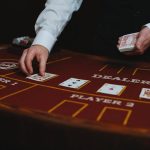Color Game: Top Strategies for Philippines Gamers

The Color Game, also known as “Color Prediction” or “Guess the Color,” has taken the Philippines by storm, captivating the attention of many gamers. This simple yet engaging game involves predicting the next color in a sequence, and while luck plays a significant role, there are strategies that can enhance your chances of winning. In this article, we’ll explore the top strategies for Philippines gamers looking to dominate the Color Game.
Understanding the Basics
Before diving into the strategies, it’s essential to understand the basic mechanics of the Color Game. The game typically involves a sequence of colors that appear on the screen, and players have to predict the next color in the sequence. The colors can vary, but the most common ones are red, blue, green, yellow, and purple.
Top Strategies for Winning
1. Observe and Analyze Patterns
One of the most effective strategies in the Color Game is to observe and analyze patterns. While the game seems random, there are often underlying patterns that can help you predict the next color.
– Look for repeating colors: Some sequences may have repeating colors. Identifying these can give you an edge.
– Analyze color sequences: Try to remember the previous few colors and look for a sequence or a repeating pattern.
2. Use Statistical Analysis
Statistical analysis can also play a crucial role in predicting the next color.
– Keep a record: Keep a mental or physical note of the colors that have appeared and their frequency.
– Identify biases: Some games may have a biased algorithm, leading to certain colors appearing more frequently.
3. Manage Your Bankroll
Effective bankroll management is crucial for any game, including the Color Game.
– Set a budget: Decide how much you’re willing to spend and stick to it.
– Don’t chase losses: If you’re on a losing streak, don’t try to recoup your losses by betting more.

4. Stay Focused and Patient
Staying focused and patient is key to winning at the Color Game.
– Avoid distractions: Make sure you’re in a distraction-free environment when playing.
– Take breaks: If you’re on a losing streak or feeling frustrated, take a break and come back later.
5. Join a Community
Joining a community of fellow gamers can provide valuable insights and strategies.
– Share tips: Share your strategies and learn from others.
– Stay updated: Communities often stay updated on the latest trends and strategies.
Advanced Strategies
1. The Martingale System
The Martingale system involves doubling your bet every time you lose.
– Pros: Can help you recover losses quickly.
– Cons: Requires a significant bankroll and can lead to substantial losses if not managed properly.
2. The Fibonacci System
The Fibonacci system involves betting according to the Fibonacci sequence;
– Pros: Can help you manage your bankroll effectively.
– Cons: May not be suitable for games with a high house edge.
The Color Game is a fun and engaging game that requires a combination of luck, strategy, and skill. By observing patterns, using statistical analysis, managing your bankroll, staying focused, and joining a community, you can enhance your chances of winning. Remember to always gamble responsibly and have fun!
Frequently Asked Questions
- Is the Color Game rigged? While the game seems random, some algorithms may be biased. Observing patterns and using statistical analysis can help.
- Can I win consistently? No, the game involves an element of luck. However, using the strategies outlined above can improve your chances.
- How do I manage my bankroll effectively? Set a budget, avoid chasing losses, and take regular breaks.
By following these strategies and staying informed, Philippines gamers can enjoy the Color Game while increasing their chances of winning.






I
The Color Game can be so frustrating at times, but with these strategies, I feel more confident about my chances of winning. The advice to observe and analyze patterns is particularly useful – it
This article provides great insights into the Color Game and offers practical strategies for winning. I especially liked the section on statistical analysis, it